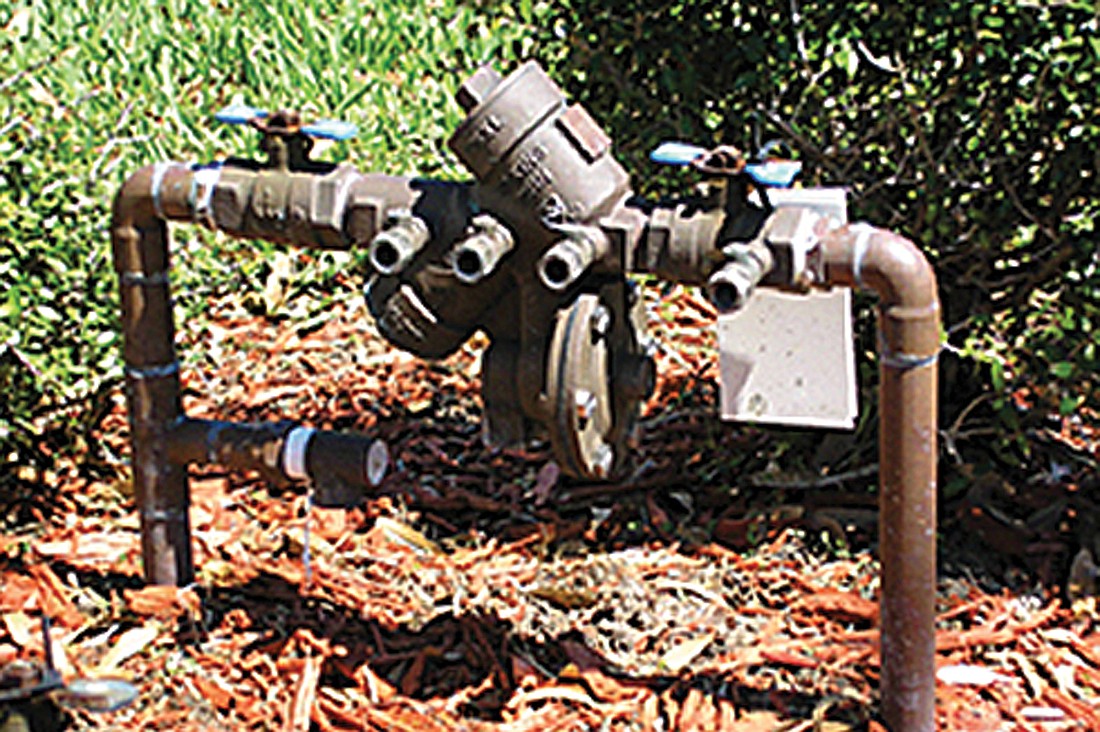- April 16, 2024
-
-
Loading

Loading

The Sarasota City Commission said Monday it would prefer the city pay $1.2 million over the next five years to install backflow prevention devices than endure the code-enforcement headaches that would ensue if it leaves the financial responsibility up to the city’s water users.
During its Oct. 3 regular meeting, the commission agreed to spend $250,000 per year for the next five years to install approximately 3,000 residential and 1,400 commercial backflow devices.
In an emergency, such a device prevents the backflow of contaminated water from a house or office into the city’s water system.
A city ordinance was created to comply with federal and state Health Department standards, but city staff said the current backflow prevention program has encountered problems in forcing the remaining water users who need backflow prevention devices to install one.
More than 2,150 backflow devices have been installed in the city to date.
However, approximately 1,400 commercial backflows still need to be installed. Among residential customers, 3,000 of the devices need to be installed out of the 4,000 required.
Utilities Director Javier Vargas offered the commission several options, including forcing water users to pay approximately $400 for a backflow device, finding ways to spread out customers’ payments for the expense and/or providing rebates to customers.
“It’s going to be controversial,” Vargas said. “It’s hard to ask customers to spend $400 to install a device that doesn’t provide visible benefits to their homes.”
The metal-pipe backflow devices, which typically sit in the middle or front of a yard, can stand out as eyesores unless homeowners cover them with foliage or place fake plastic rocks over them.
The commission agreed with staff’s assessment, choosing to fund the program entirely rather than spend thousands of dollars for several years trying to force customers to comply through code enforcement.
The program calls for addressing the commercial backflow devices in the first two years of the program, while working toward installing residential backflows in the second through fifth years.
The goal, Vargas said, is to schedule last the installation of backflow devices at residences with pools, with hope the state might reverse its course and not mandate backflow installations for pools.
Commissioners were committed to the program, but visibly frustrated by the expense.
“This isn’t something we dreamed up,” said Commissioner Shannon Snyder, who was upset the work had to be done even though the city had had only two backflow incidents in the past 20 years. “Spending a million dollars for a problem we don’t have is frustrating.”
City Manager Bob Bartolotta, meanwhile, said every customer with a backflow device will be responsible for paying to have the device tested periodically.
“If we do nothing, we are subject to fines,” Bartolotta said. “This is what we have to do.”
Snyder urged city staff to make sure the backflow devices are installed as close to homes as possible and away from driveways, front yards and sidewalks.
While installing the devices as close as possible to water meters, which typically are in front yards, is safer and better prevents a backflow problem, the city can ask customers to sign waivers that allow the devices to be placed closer to their homes.
“These things get run over all the time,” Snyder said. “Let’s keep them out of sight as much as possible.”